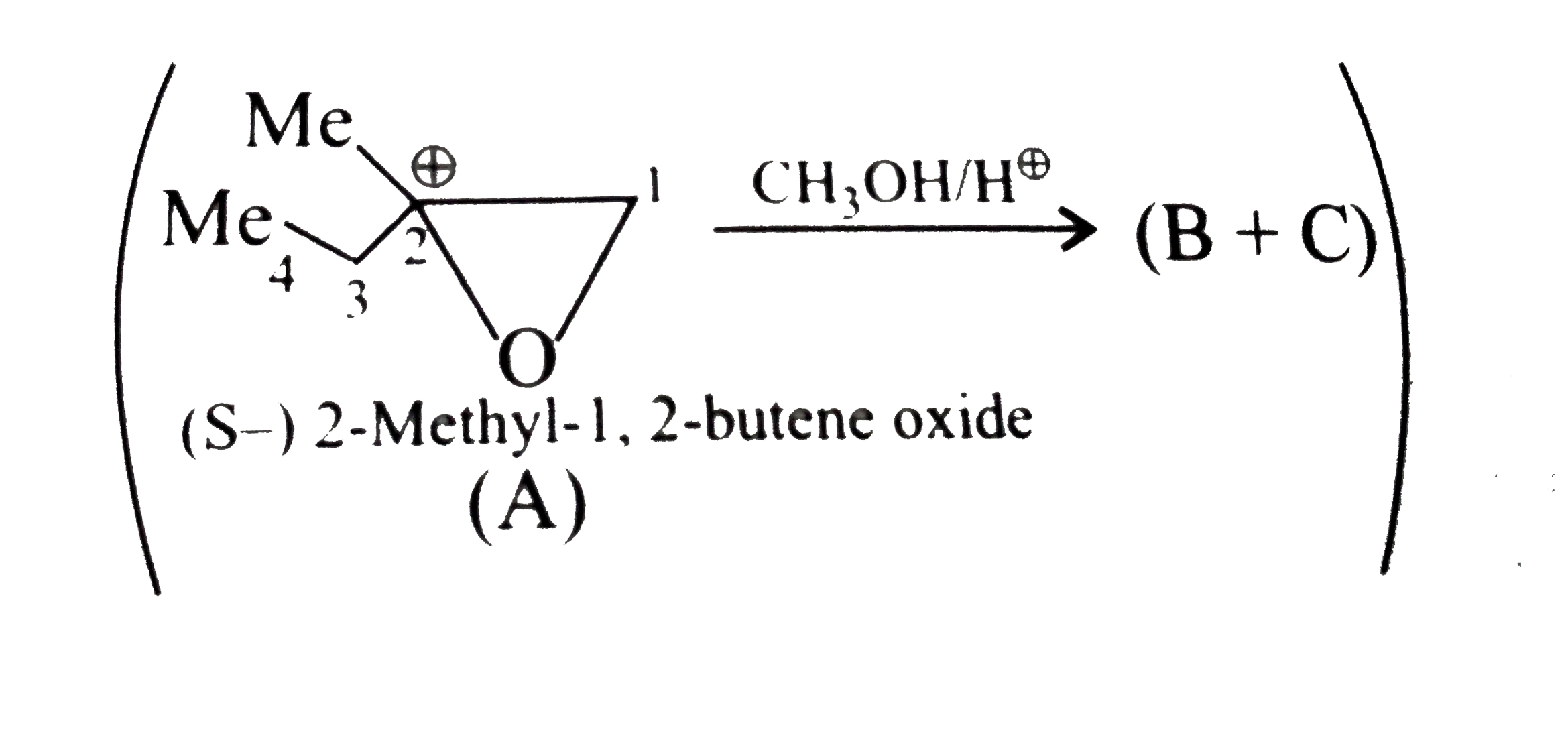Explain the formation B and C, optically pure different isomers form (A) with little recemisation.

Video Solution
Text Solution
(A) 
(B) is obtained by SN2 by the attack of nucleophile (MeOH) at less subsituted C, without changing id S-stereoisomer.
(C) is obtained by SN1 ring opening to give stable 3∘C⊕. The nucleophile (MeOH) attacks form the backside because frontside attack is blocked is blocked by the (−−CH2OH) group.
|
Topper's Solved these Questions
- ALCOHOL,PHENOL AND ETHERSBOOK - CENGAGE CHEMISTRYCHAPTER - ALCOHOL,PHENOL AND ETHERSEXERCISE - Solved Examples
17 Videos
- ALCOHOL,PHENOL AND ETHERSBOOK - CENGAGE CHEMISTRYCHAPTER - ALCOHOL,PHENOL AND ETHERSEXERCISE - Exercises Subjective
25 Videos
- ALIPHATIC AND AROMATIC ALDEHYDES AND KETONESBOOK - CENGAGE CHEMISTRYCHAPTER - ALIPHATIC AND AROMATIC ALDEHYDES AND KETONESEXERCISE - Archives Subjective
29 Videos
Similar Questions
Knowledge Check
(+) and (-) forms of optically active compounds are different in
Aboiling pointsBmelting pointsCspecific gravityDspecific rotationThe 'd' and 'l' forms of an optically active compound differ in
ABoiling pointsBMelting pointsCSpecific rotationDSpecific gravity
Explain the formation of different organ systems from the germ layers in human embryogenesis.
View SolutionExplain the formation of A and B when X reacts with C2H5MgBr.

View SolutionExplain the formation of products (B), (C), and (D) in the following reaction.

View SolutionExplain with examples different forms of social differences.
View SolutionExplain with examples different forms of social differences.
View SolutionExplain the formation of the products giving the structures of the intermediates.
a.
b.
View Solution

